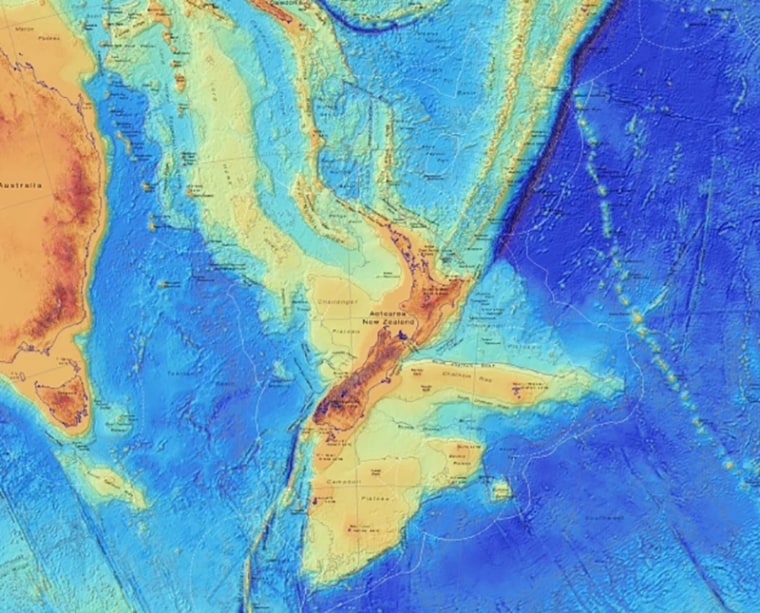Earth's mysterious eighth continent doesn't appear on most conventional maps. That's because almost 95 percent of its land mass is submerged thousands of feet beneath the Pacific Ocean.
Zealandia — or Te Riu-a-Māui, as it's referred to in the indigenous Māori language — is a 2 million-square-mile (5 million square kilometers) continent east of Australia, beneath modern-day New Zealand. Scientists discovered the sprawling underwater mass in the 1990s, then gave it formal continent status in 2017. Still, the "lost continent" remains largely unknown and poorly studied due to its Atlantean geography.

Now, GNS Science — a geohazards research and consultancy organization owned by the government of New Zealand — hopes to raise Zealandia (in public awareness, at least) with a suite of new maps and interactive tools that capture the lost continent in unprecedented detail.
Related: Photos: The world's weirdest geological formations
"We've made these maps to provide an accurate, complete and up-to-date picture of the geology of the New Zealand and southwest Pacific area — better than we have had before," Nick Mortimer, a geologist and lead author of the maps, said in a statement. "Their value is that they provide a fresh context in which to explain and understand the setting of New Zealand's volcanoes, plate boundary and sedimentary basins."
The new maps reveal Zealandia's bathymetry (the shape of the ocean floor) as well as its tectonic history, showing how volcanism and tectonic motion have shaped the continent over millions of years. Data for the bathymetric map was provided by the Seabed2030 project — a global effort to map the entire ocean floor by 2030. (The project is about 20 percent complete.)
The team also released interactive versions of both maps on a new Zealandia webpage. Spend a few minutes clicking around the hyper-detailed images — and, when someone asks what you're doing, simply tell them you're "discovering Earth's lost continent."
- 7 ways the Earth changes in the blink of an eye
- 10 most hazardous countries for volcanoes
- 10 ways Earth revealed its weirdness in 2019
Originally published on Live Science.